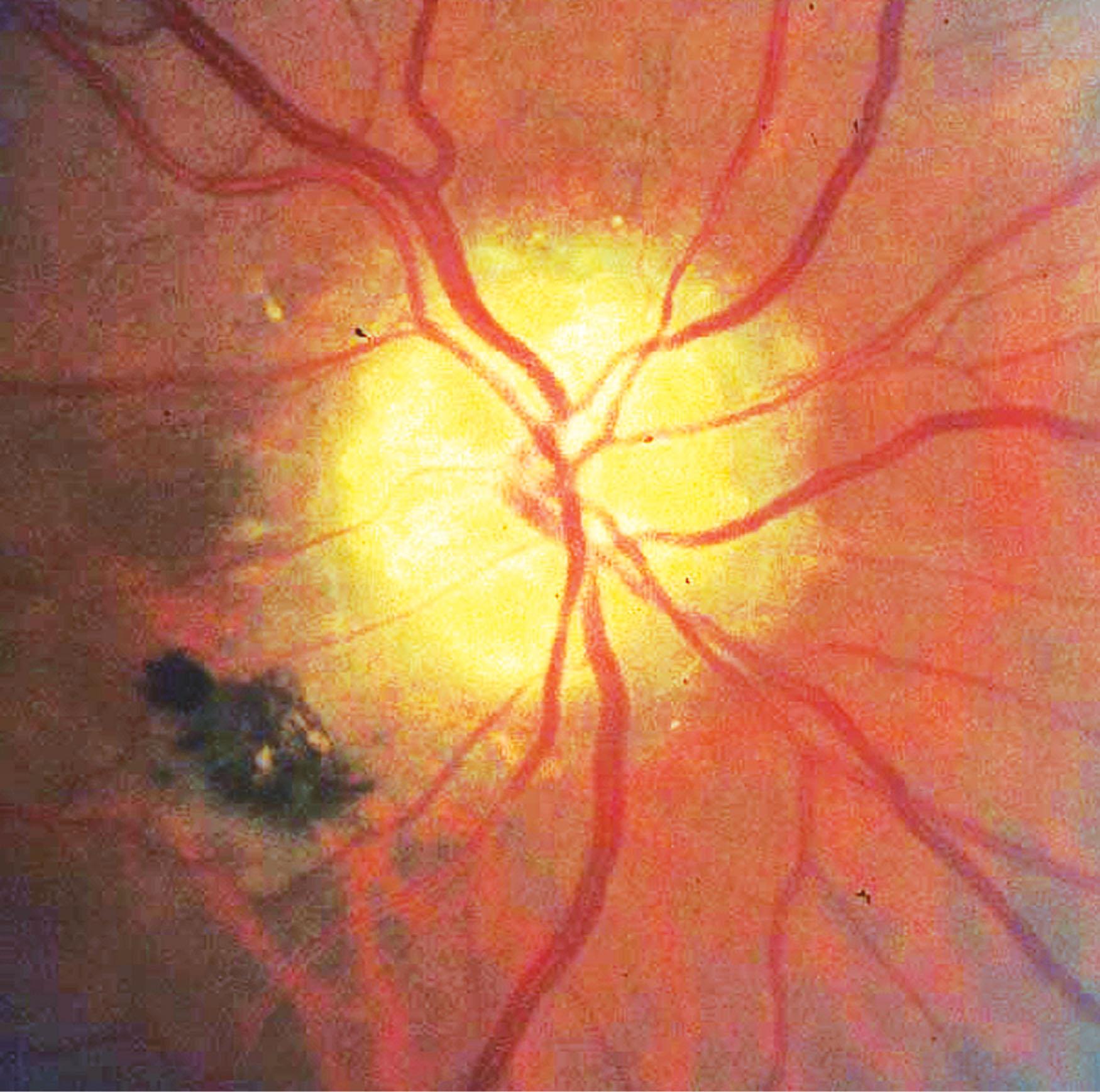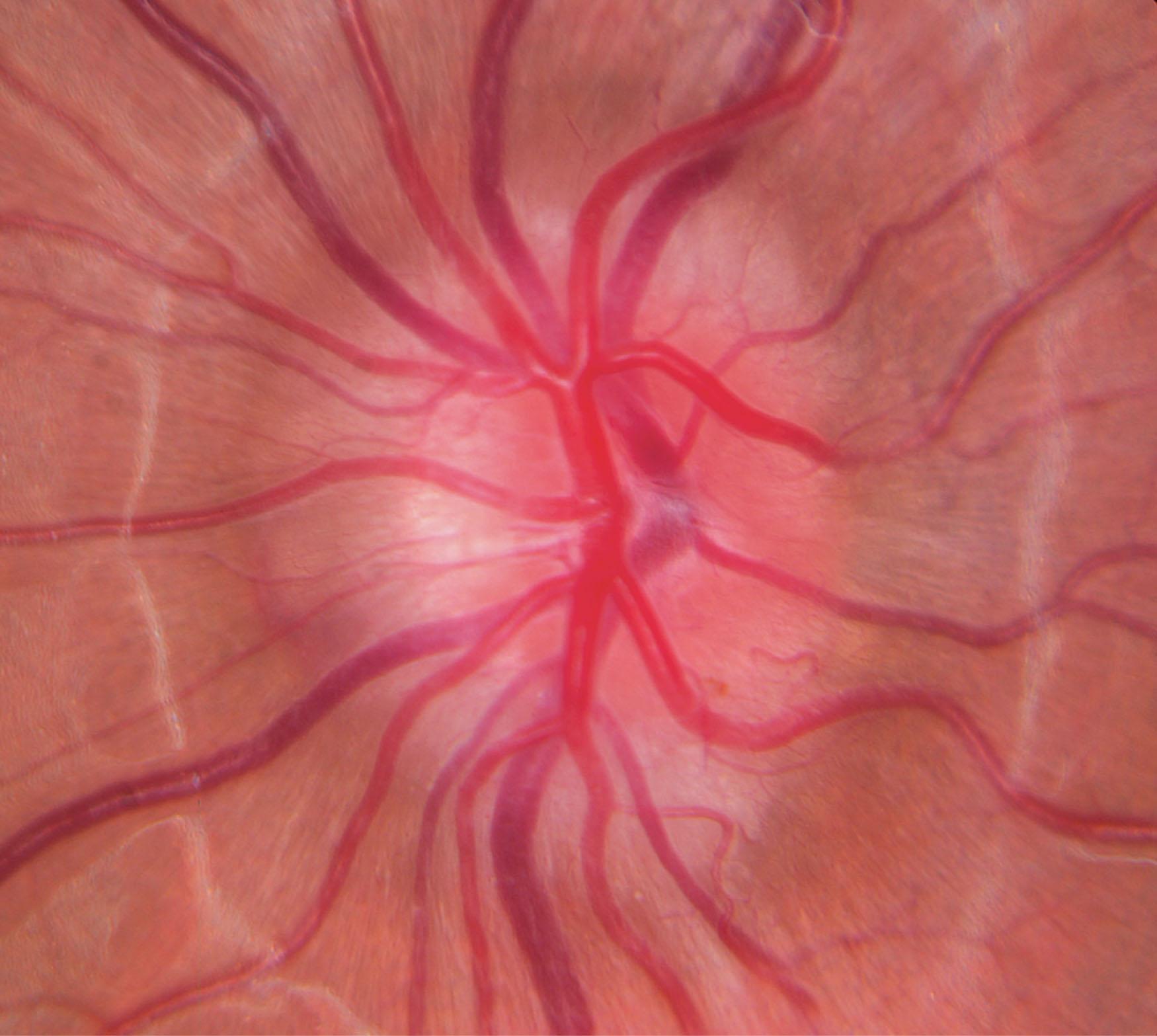Physical Address
304 North Cardinal St.
Dorchester Center, MA 02124
Acquired optic disc abnormalities in children can range from benign incidental findings to harbingers of various systemic diseases. It is important for ophthalmologists to understand the various findings that one might detect when examining the optic disc of a child, and to recognize when a systemic evaluation is required. Acquired optic disc abnormalities discussed in this chapter include pseudo-papilledema and optic disc drusen, intrinsic optic disc tumors, and optic disc atrophy secondary to nutritional, toxic, and hypoxic/ischemic etiologies. Other causes of acquired optic disc abnormalities will be covered in Chapters 21 and 57 (optic nerve and chiasmal tumors), 56 (inflammatory, infectious, and infiltrative optic neuropathies), and 59 (papilledema).
Papilledema is defined as disc swelling secondary to raised intracranial pressure. However, the disc may be elevated due to causes other than increased intracranial pressure or intrinsic optic neuropathies. In cases where there is the appearance of optic disc edema (either due to disc elevation or blurring of the disc margin) but no true papilledema, the term “pseudopapilledema” can be applied. Optic disc drusen are the most common cause of pseudopapilledema; however, there are several other causes to consider. For example, in children with high hyperopia, the optic disc is often small, crowded, and elevated, giving the appearance of possible optic disc edema. Alternatively, the optic disc margin can be obscured by myelinated nerve fibers, papillary glial tissue or persistent hyaloid vasculature, causing the appearance of optic disc edema. In these cases, a high index of suspicion will lead the clinician to recognize pseudopapilledema and avoid further diagnostic testing.
Unlike the etiologies described above, optic disc drusen may be buried deep in the optic disc, preventing easy recognition. Coexistent disc hemorrhages and visual field defects can also complicate the clinical picture and lead to unnecessary diagnostic studies to rule out increased intracranial pressure. Optic disc drusen are present in approximately 2% of the population and may be inherited autosomal dominantly with incomplete penetrance. They are less common in Black patients, possibly due to their larger average disc area or a lack of a genetic predisposition. They are acellular hyaline concretions located in the prelaminar portion of the optic nerve head and can be present on the surface of the optic disc (“surface drusen”) or buried deeper in the disc and not readily visible (“buried drusen”). In contrast to adults, drusen in children are often buried and more difficult to see; however, as children grow older, the drusen often emerge to become visible on the surface of the disc. Superficial drusen may be seen in less than 20% of children with drusen who are under 15 years of age.
The pathogenesis of optic disc drusen is not well understood; however, anatomical predisposition appears to play a role. Whether a small scleral canal or congenitally abnormal disc vasculature are the underlying etiologies is unclear, but it is hypothesized that one or more of these anatomical predisposing factors leads to axoplasmic stasis and degeneration leading to extrusion of mitochondria and eventual calcification.
As mentioned above, the appearance of optic disc drusen changes with age. Surface drusen ( Fig. 55.1 ) protrude from the disc and are most prominent at the nasal aspect, giving the margin of the disc a “lumpy-bumpy” appearance. They appear as globular yellow formations that may accumulate in conglomerations. Conversely, buried drusen ( Fig. 55.2 ) often result in elevation of the optic disc with associated blurring of the disc margins. In cases of buried drusen, the elevated disc may be gray or yellow–white. Indirect illumination of the disc can often cause a reflection of light from buried drusen. As children grow older, the border of the disc becomes more scalloped due to protrusion of the buried drusen. Optic disc drusen are often accompanied by anomalous retinal vessels, with increased looping, branching, and tortuosity.


While visual acuity loss is extremely rare in patients with optic disc drusen, visual field defects occur frequently. The prevalence of visual field defects in children with buried drusen ranges from 11% to 51% ; however, the prevalence of visual field defects seems to increase by adulthood to up to 87%. Studies comparing the prevalence of visual field defects in patients with surface vs. buried drusen have shown a markedly increased rate of visual field defects in surface drusen cases (73%) compared to patients with buried drusen (36%). The most common visual field defect patterns include nerve fiber bundle defects followed by generalized constriction, and enlarged blind spot. Visual field defects are typically asymptomatic and, when asymmetric, are often associated with an afferent pupillary defect ( Table 55.1 ).
| Advantages | Disadvantages | |
|---|---|---|
| Fundus examination | Simple, inexpensive; most useful in cases with surface drusen | Often insufficient for differentiating buried drusen from true edema |
| Autofluorescence | Does not require injection; most useful in cases with surface drusen; highly specific | Often does not detect deep buried drusen; lacks sensitivity |
| Fluorescein angiogram | Easily differentiates true edema from pseudo-edema based upon dye leakage | Requires high degree of cooperation from patient |
| Computed tomography (CT scan) | Detects calcified drusen | Radiation exposure, expense, and low sensitivity for non-calcified drusen |
| B-scan ultrasound | Simple, inexpensive, and non-invasive; does not require high level of cooperation to detect calcified drusen | Often does not detect deep buried drusen; poor resolution; lacks sensitivity |
| Optical coherence tomography (OCT) | May be useful in detecting both superficial and buried drusen. Patterns of reflectivity and internal contour may aid in differentiating true edema from drusen; able to produce retinal nerve fiber layer thickness | Sensitivity and specificity still under investigation especially in pediatric patients; requires cooperation |
Optic disc drusen can often be differentiated from true optic disc edema by a lack of other findings such as hyperemia, hemorrhages, and exudates ( Table 55.2 ). Obscuration of the blood vessels as they exit the optic disc can be an indicator of true edema, as opposed to the blood vessels coursing over a disc harboring drusen, which are never obscured by nerve fiber layer edema. Also, spontaneous venous pulsations, when observed, are evidence against a diagnosis of papilledema. Patients with drusen have also been shown to have larger arterial diameter and more secondary venous branching than patients with true papilledema.
| Papilledema | Optic disc drusen | |
|---|---|---|
| Disc contour | Smooth, elevated | Lumpy, elevated |
| Disc color | Hyperemic | Normal or yellow–white |
| Disc vasculature | Normal configuration with venous congestion | Increased branching and number of major vessels |
| Disc vasculature obscuration by edematous nerve fiber layer | Common | Not seen |
| Nerve fiber layer | Grayish, thickening extends beyond disc | Normal color with thickening abruptly ending at disc margin |
| Hemorrhages | Splinter hemorrhages common | Splinter and deeper hemorrhages rare |
| Exudates | Common | Rare |
Several ancillary tests can help to distinguish optic disc drusen from papilledema. Optic disc drusen are known to autofluoresce when photographed using angiography filters but without colorant injection. The sensitivity of this test in adults with optic disc drusen was found to be almost 80% ; however, it is not clear whether autofluorescence is equally sensitive in children whose drusen are often buried, since adults with buried drusen have a much lower rate of autofluorescence. One study found a sensitivity of 94% despite most of their children harboring buried drusen, but this study was small, and has yet to be reproduced. In a recent prospective study evaluating the utility of various diagnostic modalities in differentiating pseudopapilledema from true papilledema in children, the accuracy of autofluorescence for identifying buried drusen was 56% compared to 100% in superficial drusen.
Become a Clinical Tree membership for Full access and enjoy Unlimited articles
If you are a member. Log in here